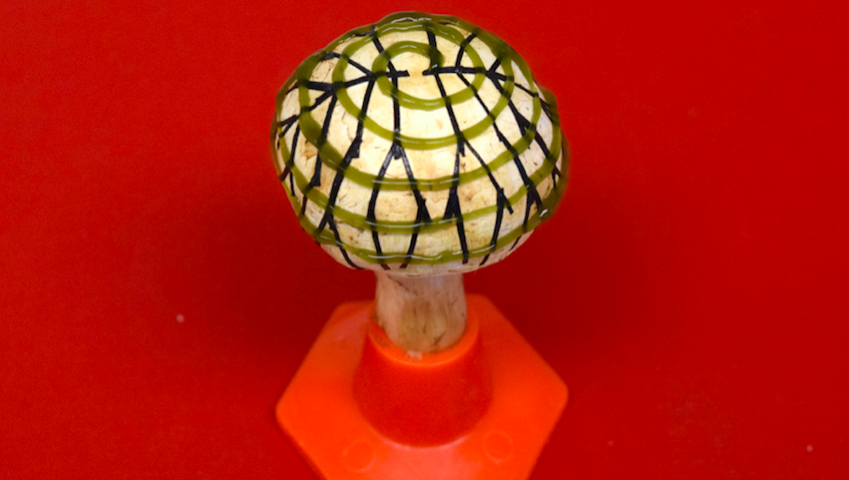
In an engineering feat straight out of a weird science-fiction story, researchers at Stevens Institute of Technology in New Jersey have taken an ordinary white button mushroom and used 3D printing technology to coat it with graphene microribbons and cyanobacteria to produce a device that generates electricity.
This so-called bionic mushroom is a fusion of nanotechnology, bacteria and fungi. Cyanobacteria are bacteria that obtain their energy through photosynthesis and previous research has pursued their use in generating renewable energy by converting sunlight into electricity. Using the bacteria in bioengineered systems has been limited because cyanobacteria do not survive long on artificial surfaces.
The Stevens researchers investigated the use of mushrooms to host the bacteria because mushrooms naturally provide an environment that hosts a rich microbiota, although not specifically cyanobacteria. The Stevens team demonstrated that cyanobacteria could survive much longer on the mushrooms than on other surfaces.
The team then engineered an electronic ink containing graphene nanoribbons. This printed branched network on the surface of the mushroom collects electricity by acting as a nano-probe accessing the electrons generated inside the cyanobacterial cells. (It is like sticking tiny needles into individual cells to access electrical signals).
The amount of electricity produced depends on how densely the bacteria is packed on the surface of the mushroom and how they are aligned. 3D printing is used to create a functional bionic architecture also on the surface of the mushroom.
Several bionic mushrooms wired together generated enough electricity to light up a small lamp. With genetic engineering of the bacteria, there is the promise of greater photo currents. Perhaps we can go from fossil fuel to fungus fuel someday.
**********
Web Links
“Bionic Mushrooms” Fuse Nanotech, Bacteria and Fungi
Photo courtesy of Sudeep Joshi / Stevens Institute of Technology.
‘Electricity from a Bionic Mushroom’ from Earth Wise is a production of WAMC Northeast Public Radio.
Leave a Reply